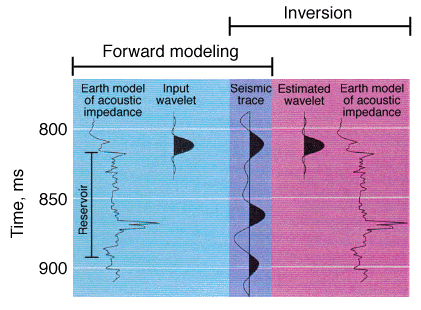1. n. []
The reversal of features, particularly structural features such as faults, by reactivation. For example, a normal fault might move in a direction opposite to its initial movement.
See related terms: fault, normal fault, structure
2. n. []
The atypical appearance of structural and topographic features, such as an anticline being exposed in a valley instead of as a hill; also called inverted relief.
See related terms: anticline, structure, topographic map
3. n. []
A mathematical process by which data are used to generate a model that is consistent with the data, the process of solving the inverse problem. In seismology, surface seismic data, vertical seismic profiles and well log data can be used to perform inversion, the result of which is a model of Earth layers and their thickness, density and P- and S-wave velocities. Successful seismic inversion usually requires a high signal-to-noise ratio and a large bandwidth.
See related terms: convergence, layer stripping, lithostratigraphic inversion, noise, Occam's inversion, parametric, processing, seismic modeling, signal, signal-to-noise ratio
